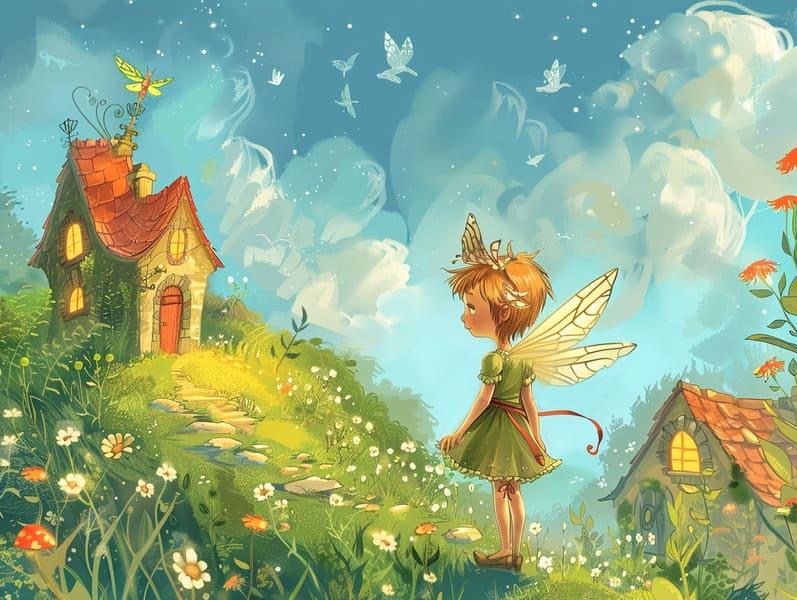
Grimm's fairy tales have ancient roots. These tales have been relayed from one generation to the next centuries before they were ever written down. They came from a variety of traditions, including Indigenous traditions. They were initially shared among elders, often carrying themes and messages relevant to the societal norms and beliefs of the time.
Jacob and Wilhelm Grimm, Jacob and Wilhelm (the Grimm brothers), were among the first to gather and publish many of these beloved narratives. Their published works, "Grimm's Fairy Stories," included narratives like "The Story of Cinderella," "Little Brother and Little Sister," and "Schneewittchen," which have since become classics in the world of iconic fairy tales. Similarly, Hans Christian Andersen's magical narratives, such as "The Mermaid's Tale," and "The Duckling's Story," have gained the love worldwide, securing their place in the pantheon of classic fairy tales.
Despite their historical roots, these stories remain as pertinent as ever, especially as children's bedtime stories. These magical stories are now available in various formats, including vibrantly illustrated books, captivating animations, and web-based fairy tales.
Their persistent charm can be linked to several charming aspects:
Ethical Lessons: Traditional fairy tales often share important moral lessons. Tales like "The Tale of the Boy Who Cried Wolf" teach the virtue of being truthful, while "The Race of the Tortoise and the Hare" show the virtues of resolve and humbleness. These stories offer children clear distinctions between right and wrong, molding their moral compass in a tender yet lasting way.
Compassion and Insight: Timeless fairy tales frequently present figures facing challenges and problems, encouraging children to identify with their struggles and boost their triumphs. For instance, "Beauty and the Beast" highlights the value of seeing beyond the surface to know the inner self of a character, nurturing compassion and awareness.
Cultural Understanding: Many old fairy tales are deeply embedded in the cultural contexts from which they sprang. Delving into these narratives can provide informative snapshots into different beliefs, enhancing a sense of cultural understanding and knowledge.
Imagination and Creativity: The imaginative elements in ancient fairy tales—magic wands—spark children’s innovative ideas. These narratives lead readers to supernatural realms, enlivening fantasy ideas and a sense of mystery that remains a lifetime.
Classic fairy tales are not only captivating but also illuminating. They function as bewitching tools in enhancing various cognitive and affective skills in kids. When traditional fairy tales are told out loud, they develop communication skills by offering new linguistic elements and complicated sentence structures. This practice also strengthens listening abilities and attention span, as little ones stay focused, expectant to see what happens next.
Furthermore, reflecting on the themes and characters of traditional fairy tales can strengthen evaluative skills and intellectual skills. Kids are guided to identify patterns, anticipate outcomes, and get cause and effect. These examinations also facilitate the young voice their thoughts and feelings, adding to their emotional intelligence.
In today’s technological era, the proliferation of free fairy tales online has made these stories more accessible than ever. Online platforms and online apps present extensive collections of famous fairy tales that can be enjoyed or heard anytime, anywhere. Fairy tales narrated are particularly well-received, providing an fascinating method for the young to experience these captivating stories. Narrated books and read-out-loud videos lead characters and settings to life, often enhanced by bewitching background sounds and soundtracks that improve the storytelling journey.
The lasting appeal of timeless fairy tales lies in their ability to modify to current eras while maintaining their essential themes. Contemporary takes of these tales often spotlight more different figures and modern settings, making them understandable to today’s audience. However, the key lessons of boldness, sympathy, and equity remain unchanged, continuing to affect audiences of all ages.
Old fairy tales also offer a sense of comfort and knowability. They serve a structured narrative with a transparent beginning, middle, and end, often wrapping up with the solving of original fairy tales for bedtime conflicts and the triumph of virtue over vice. This uniformity can be consoling for little ones, showcasing a sense of solidity in an constantly changing world.
Classic fairy tales continue to bewitch and train new generations, maintaining their majesty and significance in modern society. As kids' bedtime tales, they deliver up a perfect blend of wonder and wisdom, facilitating moral values, empathy, and creativity. The accessibility of online storybooks and the well-liked nature of fairy tales narrated affirm that these timeless stories remain accessible to new generations.
By sustaining and imparting these stories, we continue to cherish the rich tapestry of fables and cultural heritage. Whether you are enjoying a colorful picture book, seeing a web-based library, or listening to an voice book, the fascination of ancient fairy tales is always within reach. These narratives demonstrate of the invariable presence of fairy tales and its ability to hold us together across generations and cultures.
Whether you are experiencing a vibrantly illustrated book, discovering a web collection, or playing an sound book, the majesty of Grimm's fairy tales is always within reach.
These fairy tales highlight of the timeless power of storytelling and its ability to link us across time and space, forming a connection that fascinates and enlightens alike.